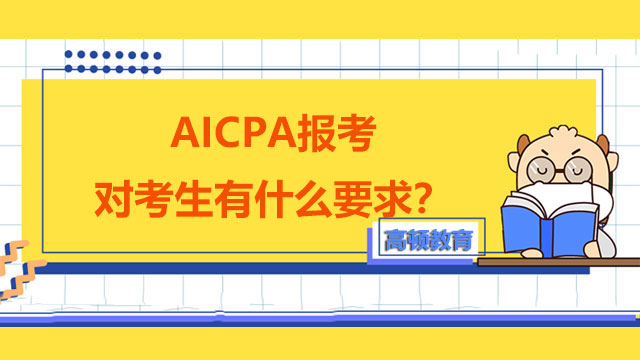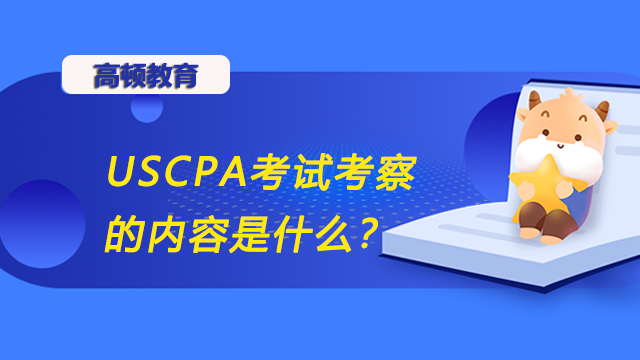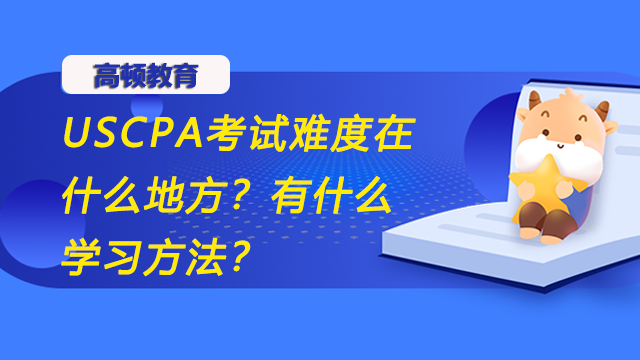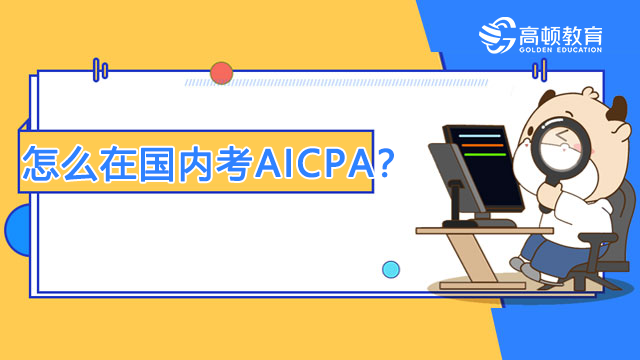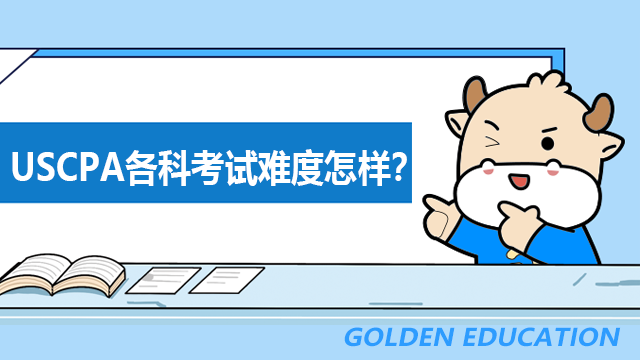USCPA知识点:每股收益(EPS)
来源:
高顿网校
2015-11-12
Earnings per share
每股收益即每股盈利(EPS),又称每股税后利润、每股盈余,指税后利润与股本总数的比率。是普通股股东每持有一股所能享有的企业净利润或需承担的企业净亏损。每股收益通常被用来反映企业的经营成果,衡量普通股的获利水平及投资风险,是投资者等信息使用者据以评价企业盈利能力、预测企业成长潜力、进而做出相关经济决策的重要的财务指标之一。利润表中,第九条列示“基本每股收益”和“稀释每股收益”项目。高顿网校USCPA小编今天来给大家简单介绍每股收益的相关考点。
All public entities are required to present Earnings Per Share(EPS)on the face of the I/S.
参《企业会计准则第34号-每股收益》
Simple/Complex capital structure
If an entity has only common stock outstanding,then it has simple capital structure.The entity only need present basic EPS for “IDE” and “I” on the face of the I/S.
If an entity has securities that can potentially be converted to common stock,then it has complex capital structure.The entity need present both basic EPS and diluted EPS for “IDE” and “I” on the face of the I/S.
The key point of identify simple or complex capital structure is securities convertible to common stock.
The key result difference is diluted EPS.
Basic EPS=[NI available to C/S]/WACSO
NI available to C/S=NI–P/S dividend
P/S dividend=Dividend declared to P/S+Dividends in arrears
Weighted-Average number of Common Shares Outstanding(WACSO)is the mean of shares outstanding and assumed to be outstanding for EPS calculations.
发行在外普通股加权平均数(WACSO)=期初发行在外普通股股数+新发行普通股股数 X 已发行时间÷报告期间-当期回购普通股股数X已回购时间÷报告期间
考点1. Cumulative P/S 未宣告的股利(dividend in arrears)是否要在计算EPS时扣除?是的。必须扣除。因为在支付普通股股东股利之前,企业必须首先支付历年的dividend in arrears.
考点2. 如果三个Stock dividends / splits方案,除实施时间不同外(分别在3/31/X1,9/30/X1,1/2/X2 ),无任何区别。B/S date是12/31,报告签发日为2/25/X2.问三个方案下谁的EPS*5?一样大。
Stock dividends/splits before the F/S ISSUE DATE must be treated as though they occurred at the earliest beginning of the period in the report.
Complex capital structure–potentially dilutive securities type:
Convertible securities(convertible P/S or bonds)
Warrants and other options
Contracts that may be settled in cash or stock;and
Contingent shares
“Treasury stock” Dilutive vs.Antidilutive
Market price>Exercise price,Dilutive
Market price<Exercise price,Antidilutive
If the security is antidilutive,ignore it during calculating dilutive EPS.因为没有投资人会傻到当market price<exercise price时,还行权
“If-converted” method are adopted during calculating the dilutive EPS.If-converted method assumes that the securities were converted to C/S at the beginning of the period(or at the time of issue,if later)
Diluted EPS=[Income available to C/S + interest on dilutive securitiesX(1-Tax rate)]/[WACSO,assuming all dilutive securities are converted to C/S]
Dilution from Options,Warrants,and their Equivalents–Treasury Stock Method.
The equivalents of options and warrants include nonvested stock granted to employees,stock purchase contracts,and partially paid stock subscriptions.
Treasury Stock Method的逻辑是:
当期权行权时,会增加outstanding的股票,进而稀释EPS
如果用行权时所收到的金额,按市价购买库存股,会减少outstanding的股票,进而反稀释EPS
真正的增加的股票和稀释的效果是以上两者的综合
Additional shares outstanding=number of shares issued for option–[proceeds received for option exercise / average market price]
Proceeds received for option exercise=number of shares issued for option X exercise price
Diluted from Convertible Securities–If converted method
1st.计算Basic EPS
2nd.计算Additional C/S(按合同约定)
3rd. 计算Additional N/I.对Bonds,增加了Interest X(1-tax rate)。对P/S,无影响。
4th.计算 If-converted的EPS
5th. 取min(basic EPS,if-converted EPS)
存在多种潜在稀释证券时的计算顺序(同时有option,convertible P/S,convertible bonds)
独立原则。各种证券互不影响,互相独立。
按稀释性大小,先算稀释性*5的。实务中通常稀释性从大到小为option and warrants,convertible P/S,convertible bonds.
计算顺序的逻辑–稳健性原则。告诉投资人一个最小的Dilutive EPS.
Dilution from contracts that may be settled in cash or stock.
GR:presumed to be settled in C/S.
SR:Included in diluted EPS
逻辑–稳健性原则。告诉投资人一个最小的Dilutive EPS.
Dilution from contingent shares.
Contingent issuable shares depend on some future event or on certain conditions being met.
If all conditions for issuance are met,contingent shares are also included in BASIC EPS as of the beginning of the period in which the conditions were satisfied.
If NOT,contingent shares are also included in Dilutive EPS.
Disclosures of EPS
Reconciliation of the numerators and the denominators of the basic and diluted EPS.
The effect of P/S dividend(in arrears)
Potentially dilute EPS but not included
Subsequent issues which may effect EPS
Cash flow amount per share are NOT disclosed
Summary of EPS(F7-31)重要
FAR F7-3 Statement of cash flows
Cash flow statement(C/F)is composed by:
operating cash flows(CFO),which is from transactions reported on the I/S,and Current assets and current liabilities.
Investing cash flows(CFI),which is from noncurrent assets.
Financing cash flows(CFF),which is from debt and equity.
Cash and cash equivalents
Cash is defined as actual cash(i.e.,currency and demand deposits)
Cash equivalents are defined as short-term,liquid investment,that are:
Quickly convertible into specific amounts of cash
So near maturity that the risk of changes in the value because of interest rate changes is insignificant.
CFO+CFI+CFF=the end cash and cash equivalent-the begin cash and cash equivalent
Methods of presenting the statement of C/F
The direct method(encourage)
The indirect method
Direct / Indirect method only different on CFO.The CFI & CFF is the same.
Under the direct method,the CFO shows the major classes of operating cash receipts and disbursements.A reconciliation of NI to CFO is required to be provided in a separate schedules under U.S. GAAP.
Indirect method CFO=NI+Noncash Expense/Loss–Noncash Income/Gains+Increase in operating liabilities–Increase in operating assets.
间接法下的正负号的逻辑:
现金及等价物是资产。
同性相斥,异性相吸。
资产的增加,减少CFO.
负债的增加,增加CFO.
CFO involve producing goods and delivering services to customers.
All transactions not categorized as CFI & CFF are categorized as CFO.
Direct method–categories to report
Cash received from customers=Revenue+increase in unearned revenue–increase in AR
Interest received
Dividend received
Direct method–categories to report(Cont‘)
Other operating cash receipts
Cash received from the sales of trading securities
Cash paid to suppliers and employees=COGS+increase in inventory–increase in A/P+salaries and wages expense–increase in wages payable
Interest paid
Direct method–categories to report(Cont‘)
Income taxes paid
Cash paid to acquire trading securities
Other operating cash payments=other operating expenses+increase in prepaid expenses–increase in accrued liabilities.
Indirect Method–adjustment to NI
All deferral of past operating cash receipts and disbursements.
All accruals of expected future operating cash receipts and disbursements.
All items that are included in NI that do NOT affect operating cash receipts and disbursements.
Indirect method CFO=NI+Noncash Expense/Loss–Noncash Income/Gains+Increase in operating liabilities–Increase in operating assets.
Indirect method CFO=“CLAD”
Current assets and liabilities
Losses and gains
Amortization and depreciation
Deferred items
Short-Cut Cash Flow Effects
Changes in debit balance accounts will have the opposite effect on cash flows
Changes in credit balance accounts will have the same effect on cash flows
Gains and Losses–CFI
Gains are subtracting from NI
Losses are adding to NI
Investing Activities include cash flows from the purchase or sale of NONCURRENT assets.
Making loans to other entities
Purchasing or disposing of trading,AFV,HTM
Acquiring or disposing of PP&E
Acquiring under acquisition method using cash.
Financing activities include cash flow from noncurrent liability and equity activities.
Obtaining resources from owners(issue stock)
Providing owners with return(dividend)
Obtaining resources from creditors(bonds)
Payments of principal on amount borrowed
Non cash investing and financing activities should be provided separately in a supplemental disclosure. Include:
A purchase of PP&E by issuance of stock
Conversion of bonds to equity
Acquiring assets through a capital lease obligation
The exchange of one noncash asset for another noncash asset
Summary of cash flow classifications of individual transactions (F7-38)。重要。
IFRS differences in reporting cash flow(F7-39)
Interest received
Interest paid
Dividends received
Dividends paid
Tax paid
FAR F7-Appendix I Ratio Analysis
Liquidity Ratios
Activity Ratios
Profitability Ratios
Long–term Debt-Paying Ability Ratios
高顿网校温馨提醒
USCPA-美国注册会计师,全球会计*9证,国内人才缺口25万,年薪40W起,如何成为全球财会精英?点击获取USCPA职业发展白皮书!
美国注册会计师精彩推荐: USCPA招生专题
USCPA考试常见问题解析
版权声明:本条内容自发布之日起,有效期为一个月。凡本网站注明“来源高顿教育”或“来源高顿网校”或“来源高顿”的所有作品,均为本网站合法拥有版权的作品,未经本网站授权,任何媒体、网站、个人不得转载、链接、转帖或以其他方式使用。
经本网站合法授权的,应在授权范围内使用,且使用时必须注明“来源高顿教育”或“来源高顿网校”或“来源高顿”,并不得对作品中出现的“高顿”字样进行删减、替换等。违反上述声明者,本网站将依法追究其法律责任。
本网站的部分资料转载自互联网,均尽力标明作者和出处。本网站转载的目的在于传递更多信息,并不意味着赞同其观点或证实其描述,本网站不对其真实性负责。
如您认为本网站刊载作品涉及版权等问题,请与本网站联系(邮箱fawu@gaodun.com,电话:021-31587497),本网站核实确认后会尽快予以处理。
在线咨询热销
专业老师服务 限时优惠
点一下领资料
USCPA教材试读-REG
真题高频考点,刷题全靠这份资料
下载合集
USCPA-REG学习思维导图
梳理核心考点,一图看懂全部章节
下载合集
USCPA考试公式大全
突破计算瓶颈,节省考试时间
下载合集
USCPA备考 热门问题解答
- 美国注会考试考多少分及格?
-
uscpa一共有四门科目,每门考试的满分为99分,75分及格,但是这个75不是75%的正确率,不能被理解为百分比。
- uscpa一共几门几年考完?
-
uscpa总共考4门,一般单科成绩的有效期为18个月,大家需要在这个有效期的时间内,通过剩余的三门科目,否则第一门通过的考试成绩就作废,需要重考。因此,uscpa考试周期最长为18个月。
- uscpa一年能考几次?
-
NASBA和AICPA开启了连续测试期后,大家可以不受限制的全年参加uscpa考试。在uscpa的考试成绩公布后,如果大家发现自己没有通过考试,能够马上申请并参加该门科目考试,也不用再等待下一个考季才能申请重考。
- uscpa的含金量如何?
-
uscpa是美国正式的注册会计师国家资格,在美国拥有审计签字权,作为美国财经领域的三大黄金证书之一,在国内外都有着很好的知名度。很多外企招聘财务经理或财务总监岗位,都将持有uscpa证书作为优先录用条件。
严选名师 全流程服务
其他人还搜了
热门推荐
-
AICPA该怎样备考?有没有什么资料推荐? 2023-08-29
-
USCPA的考试方式是怎么样的? 2023-07-18
-
uscpa网课有必要吗?零基础怎么学uscpa? 2023-05-05
-
2023年AICPA补学分怎么补 2022-12-29
-
AICPA考试的科目介绍是怎样的?考生应该怎样备考AICPA? 2022-07-26
-
AICPA报考对考生有什么要求?AICPA考试备考需要做什么? 2022-07-20
-
USCPA科目分别怎么备考?USCPA考前需要怎么做? 2022-07-20
-
USCPA考试科目着重考察什么?USCPA考试的题型分为哪几种? 2022-07-12
-
AICPA考试的内容有哪些?AICPA的备考方案是什么? 2022-07-07
-
怎样才能拿下USCPA考试?USCPA执照申请需要满足什么条件? 2022-07-07
-
USCPA具体的学习内容有哪些?学习USCPA如何利用好教材? 2022-07-06
-
USCPA考试对于国内考生的难点在哪?USCPA备考建议是什么? 2022-07-06
-
USCPA考试对于国内考生有什么难点?高效学习USCPA的方法是什么? 2022-07-05
-
USCPA考试考察的内容是什么?USCPA考试学习的建议有哪些? 2022-07-04
-
USCPA考试有什么内容?USCPA考试没通过心态如何调整? 2022-07-04
-
USCPA考试有什么内容?USCPA考试没通过心态如何调整? 2022-07-04
-
AICPA考试具体考察什么内容?应该怎么学习AICPA? 2022-06-22
-
USCPA考试难度在什么地方?有什么学习方法? 2022-05-30
-
USCPA考试哪一门最难?有什么学习方法? 2022-05-27
-
2022年USCPA备考有什么小技巧? 2022-05-27
-
USCPA考试是一个好考的考试吗? 2022-05-26
-
考USCPA怎么能提分? 2022-05-26
-
如何通过美国注册会计师考试? 2022-05-20
-
怎么在国内考AICPA? 2022-05-16
-
USCPA各科考试难度怎样? 2022-05-07
-
AICPA学习需要报培训班吗?培训有什么优势? 2022-03-23
-
2022年USCPA可以在哪些机构篇培训?靠谱吗? 2022-03-11
-
USCPA培训班哪个好?如何选择? 2022-03-10
-
USCPA选择哪里培训?选择培训需要考虑什么? 2022-03-09
-
UCPA该怎么选择培训班?哪里好? 2022-02-25
 更多服务
更多服务












